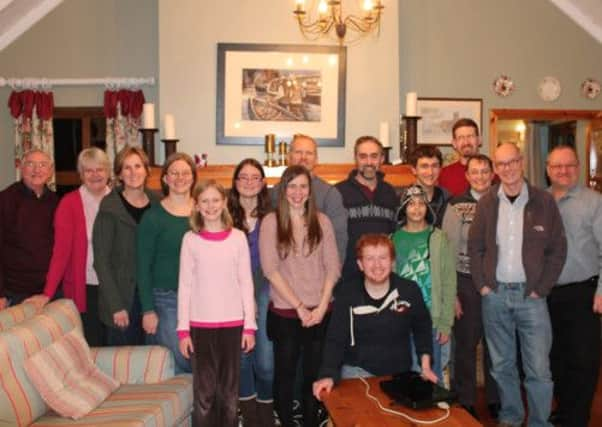Getting The Word out!


After spending some time working with various language communities in the Democratic Republic of Congo, I am now working in the Belfast office, engaging with churches, groups and individuals, to promote the work of Bible translation from home.
On Thursday, January 24, the Wycliffe NI office team were in for a treat as we headed up to the North Coast to visit Wycliffe Eurasia’s sign languages team which had gathered there for a conference from various parts of Europe and the US.
Advertisement
Hide AdAdvertisement
Hide AdWycliffe Bible Translators aims to provide all people around the world with access to God’s Word in a language that they truly understand. Sign Languages are REAL languages, different from each other and different to the spoken languages of their countries. They have their own distinct grammar, vocabulary and other features.
It was interesting to consider the contrast between spoken and signed languages: British English and British Sign Language are two very different languages, thus creating barriers to understanding. For two people to communicate there must be a common language. I admit that I have no idea what it feels like to be deaf but I don’t think I’m far wrong in suggesting that often a hearing person will assume that a deaf person will find a way to understand and to make him/herself understood but isn’t this quite arrogant?
As we sat in the room with the sign languages team that evening, people all around us were moving about and talking to each other but I couldn’t hear them. They were moving their arms and faces but I didn’t understand them. I was like a foreigner because I didn’t speak their language.
There are 250 confirmed (350+ estimated) sign languages worldwide with between 70-100 million people profoundly deaf. Within these communities, it is estimated that two to three per cent of deaf people have embraced the gospel. The vision of this group is that in each deaf community around the world, there will be a well-trained group of deaf people with the ability to meet the Bible translation needs of their own community.
Advertisement
Hide AdAdvertisement
Hide AdIf translation is about communicating a message clearly and accurately from one language to another so that the meaning is clearly understood, it is interesting to see that all the same basic issues of translation are still present when it comes to translating from sound languages to sign languages.
Grammar takes a different format when you have visual concepts and 3D space to use instead of linear words and sounds. Reading and writing use a different ‘alphabet’ of images and pictorial words. Sentence structures have to be changed around for the new translation to make sense, while tone and expression in spoken language can be equivalent to emphasis with facial expressions.
Why do we call a frog a frog in English? Maybe it is because of the sound it makes: ‘f-r-o-og’. What makes many words in sign languages? Often it is the way they look or appear. If we use sounds to learn to read and write obviously, where sound is impaired, reading becomes more difficult. As one translator asked, “When John the Baptist ate his locusts and wild honey, how did he do that? Did he dip the locusts into the honey?” Indeed, how is it best to present that in a sign language?
There is a spectrum of language use among deaf people - from using only sign, to being well-immersed in sound and able to read. Most people are somewhere in between. Videos give a visual presentation in sign language and sometimes subtitles are used for specific names and places which are too clumsy to spell out. Computer animation technology is fundamental to this work. With it, anyone can be videoed signing the Scripture passages, but the same animated character that appears on screen remains consistent. The character’s appearance can be altered and revisions can be easily made, without shooting entire scenes again. Even at this, there is a long road ahead for sign language Bible media, given that currently translators can work about four or five times as fast as they can produce output in video format.
Advertisement
Hide AdAdvertisement
Hide AdThey would love to have more people with knowledge of any sign languages to join their team, and also people to help with 3D animation to work alongside them to create videos for distribution on DVDs, online videos and apps.
For more information, contact [email protected] or go online to www.wycliffe.org/uk. Wycliffe UK are also planning a two week workshop camp for teachers, linguists, artists and writers in South France in the summer called Two Week Stint. Why not get in touch if you’d like to find out more?